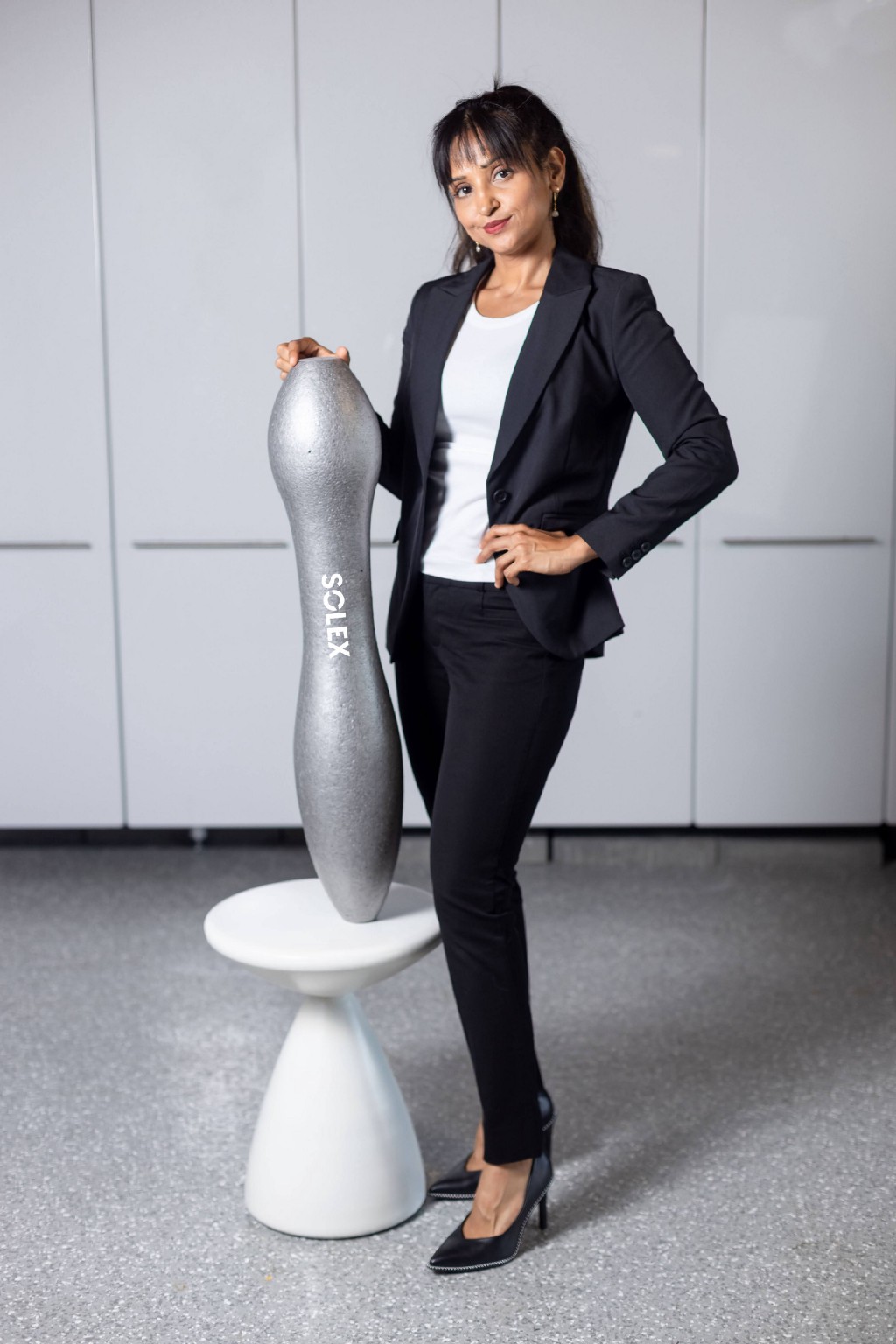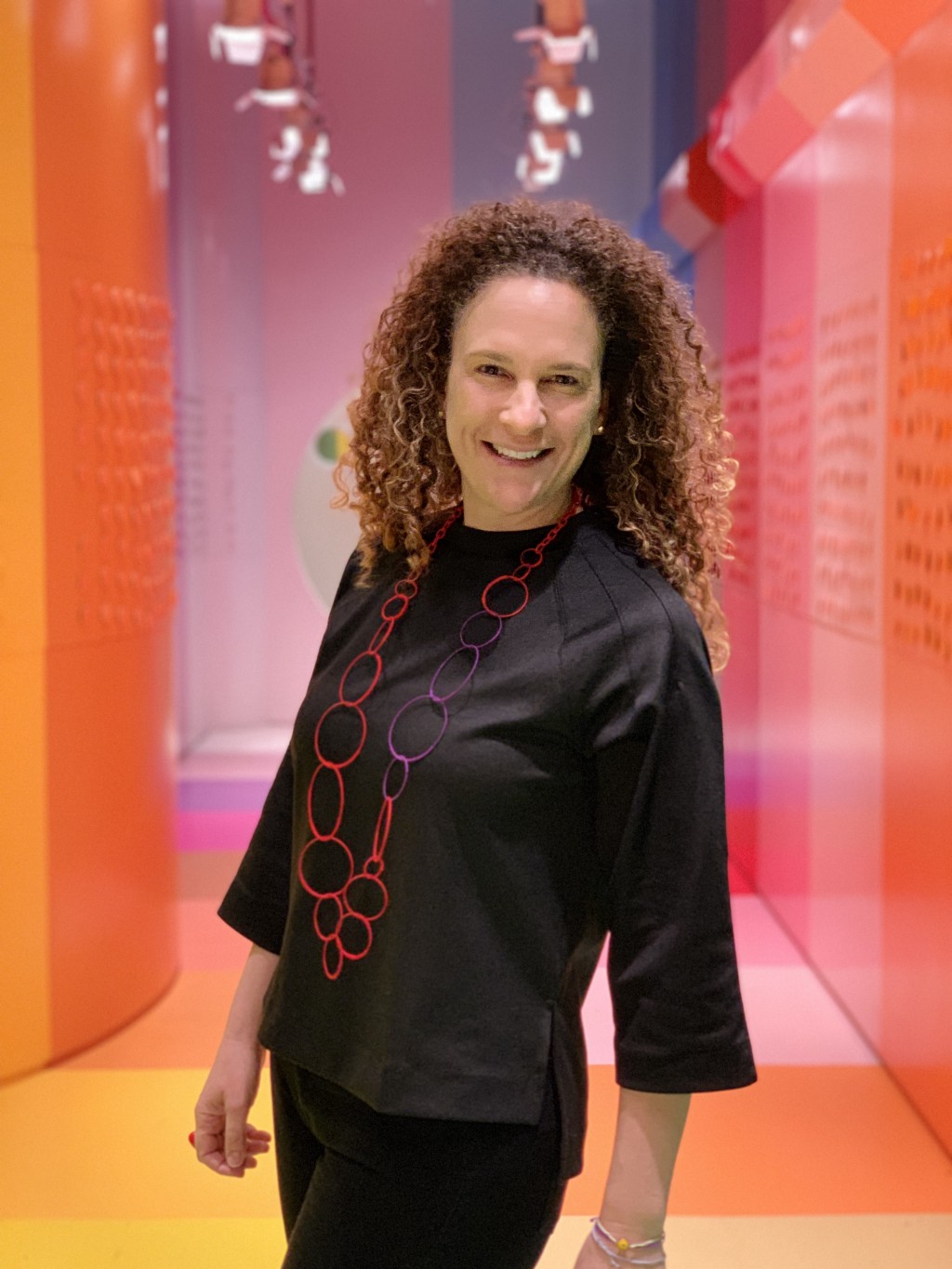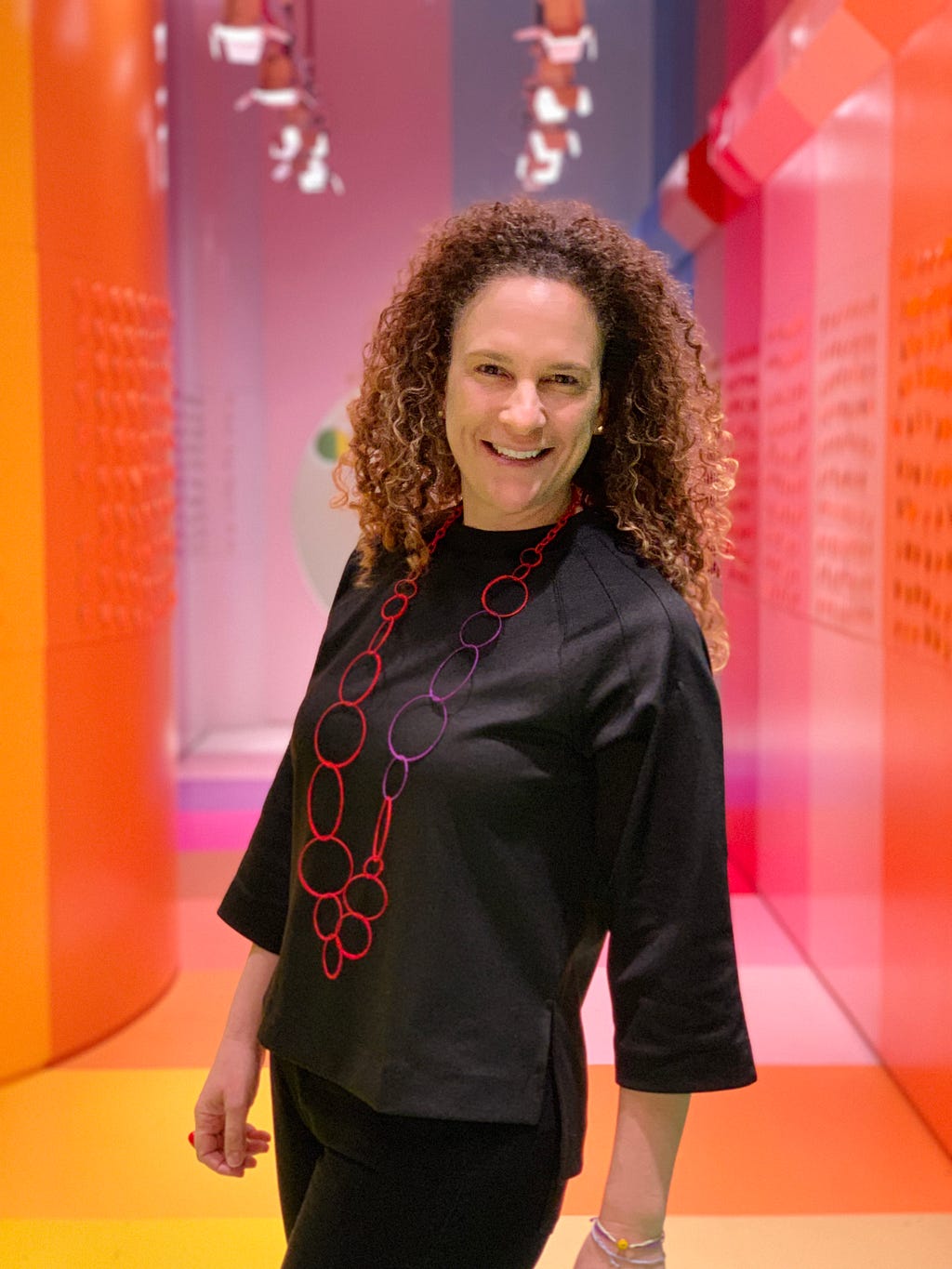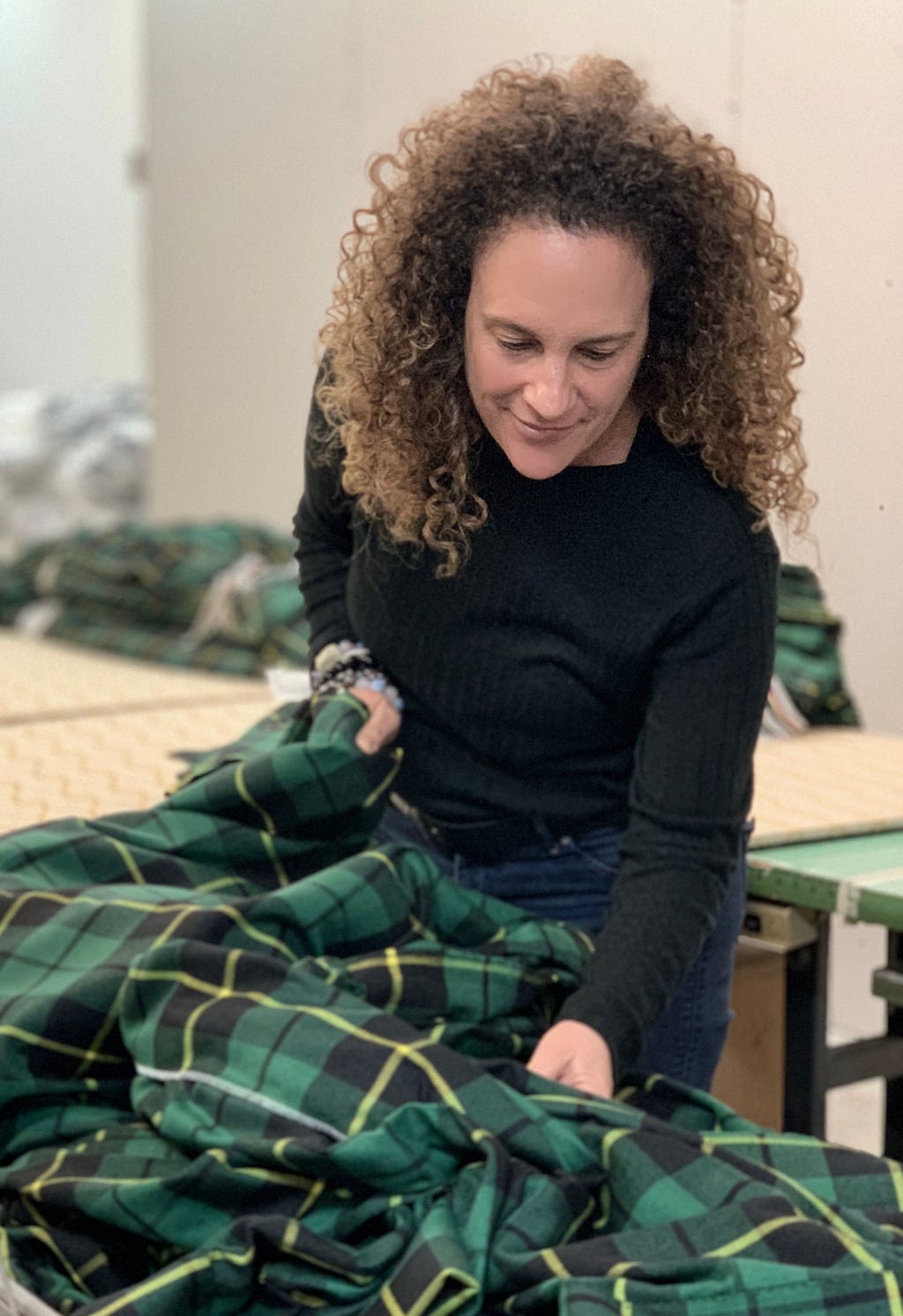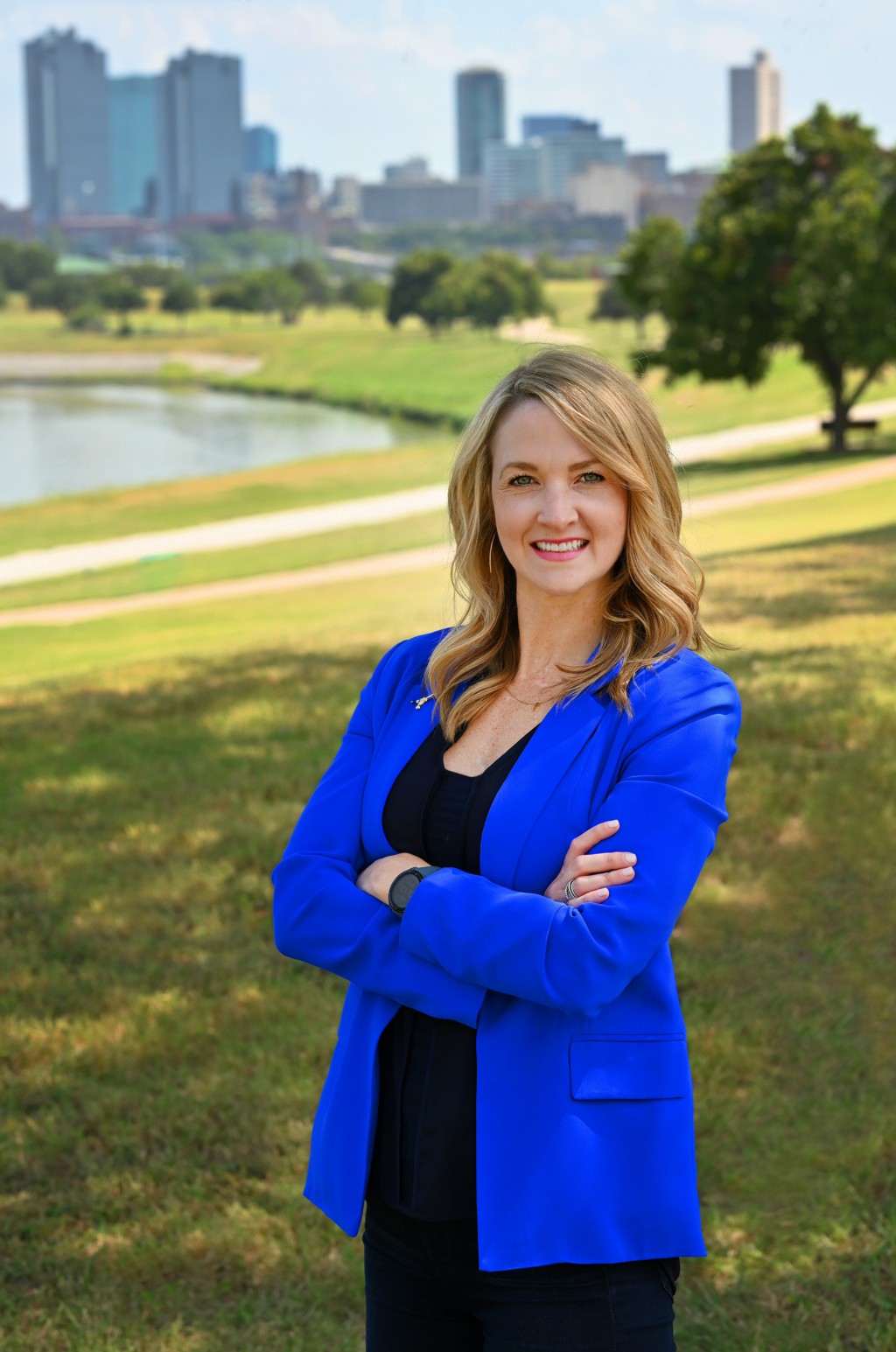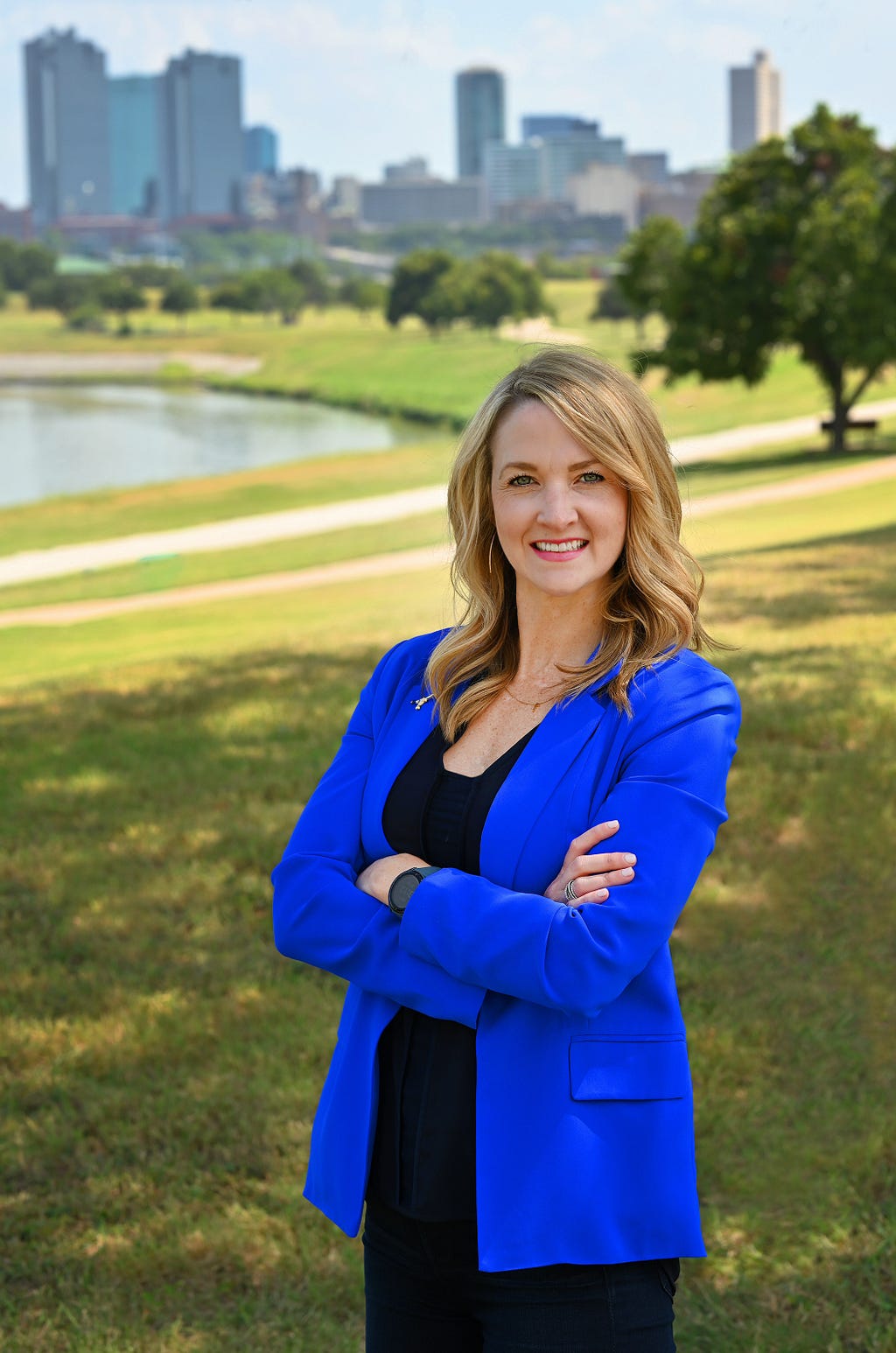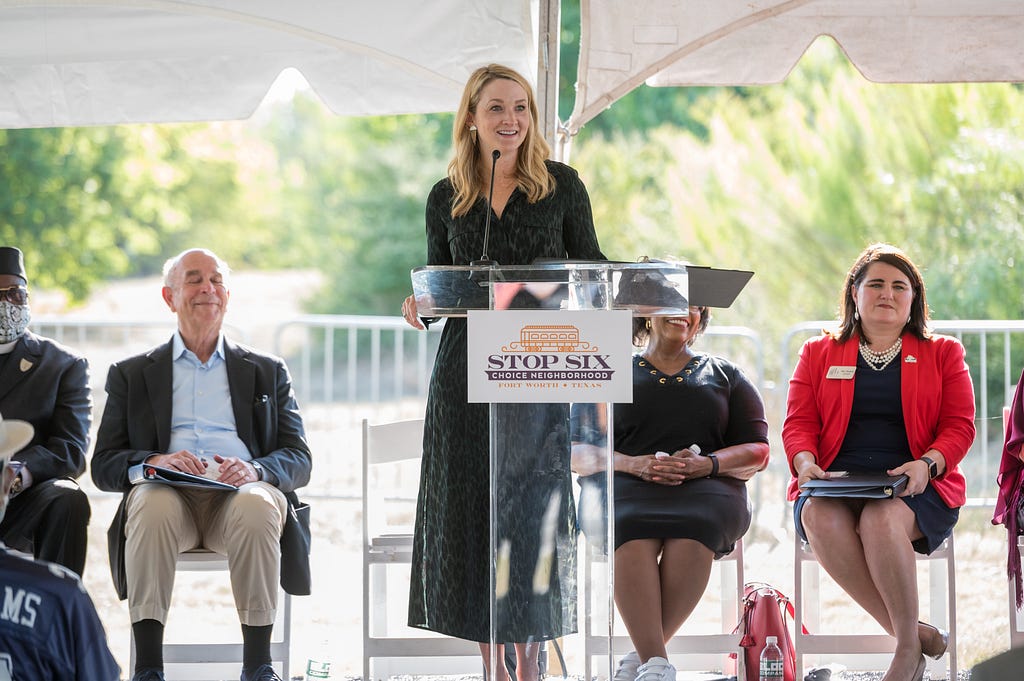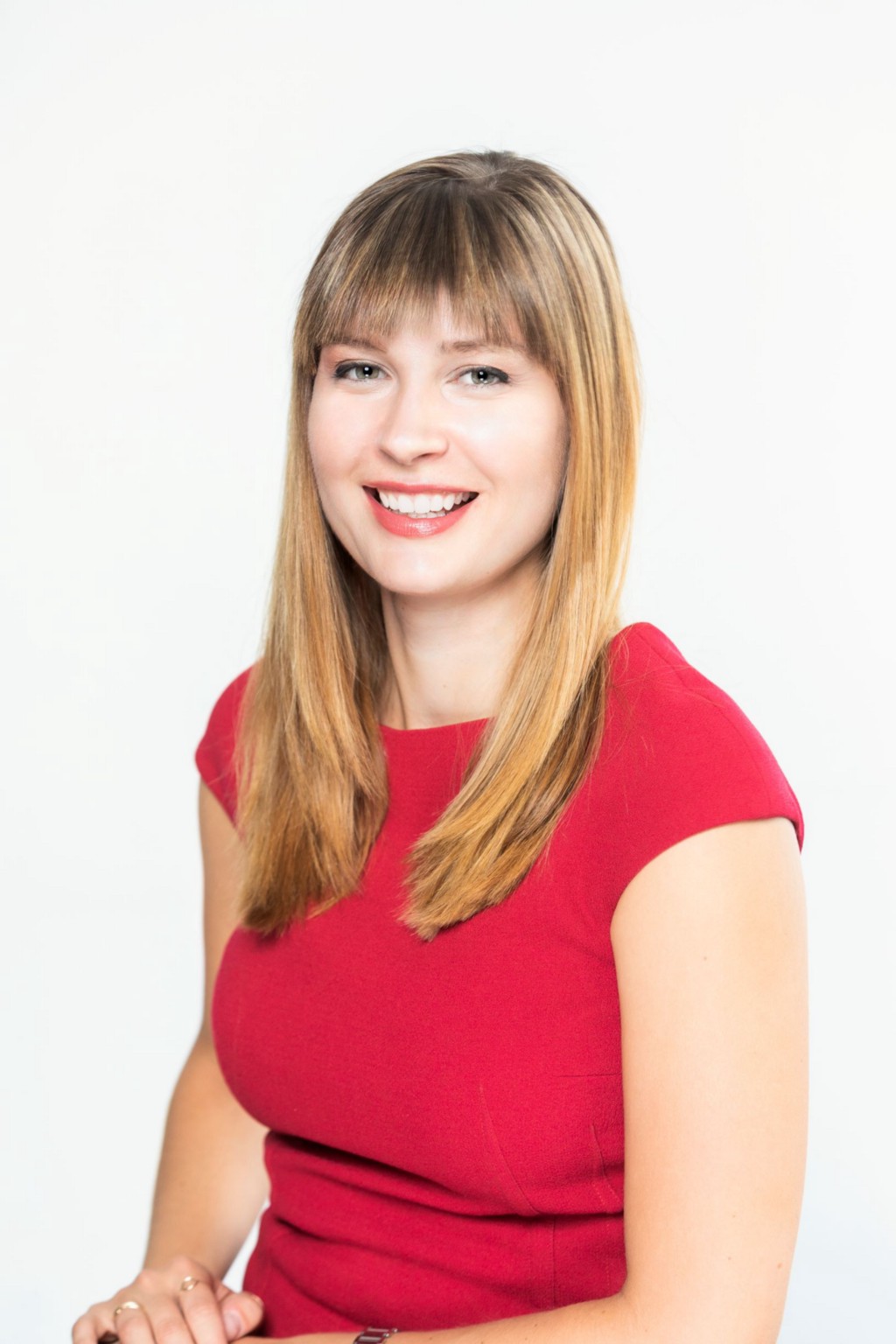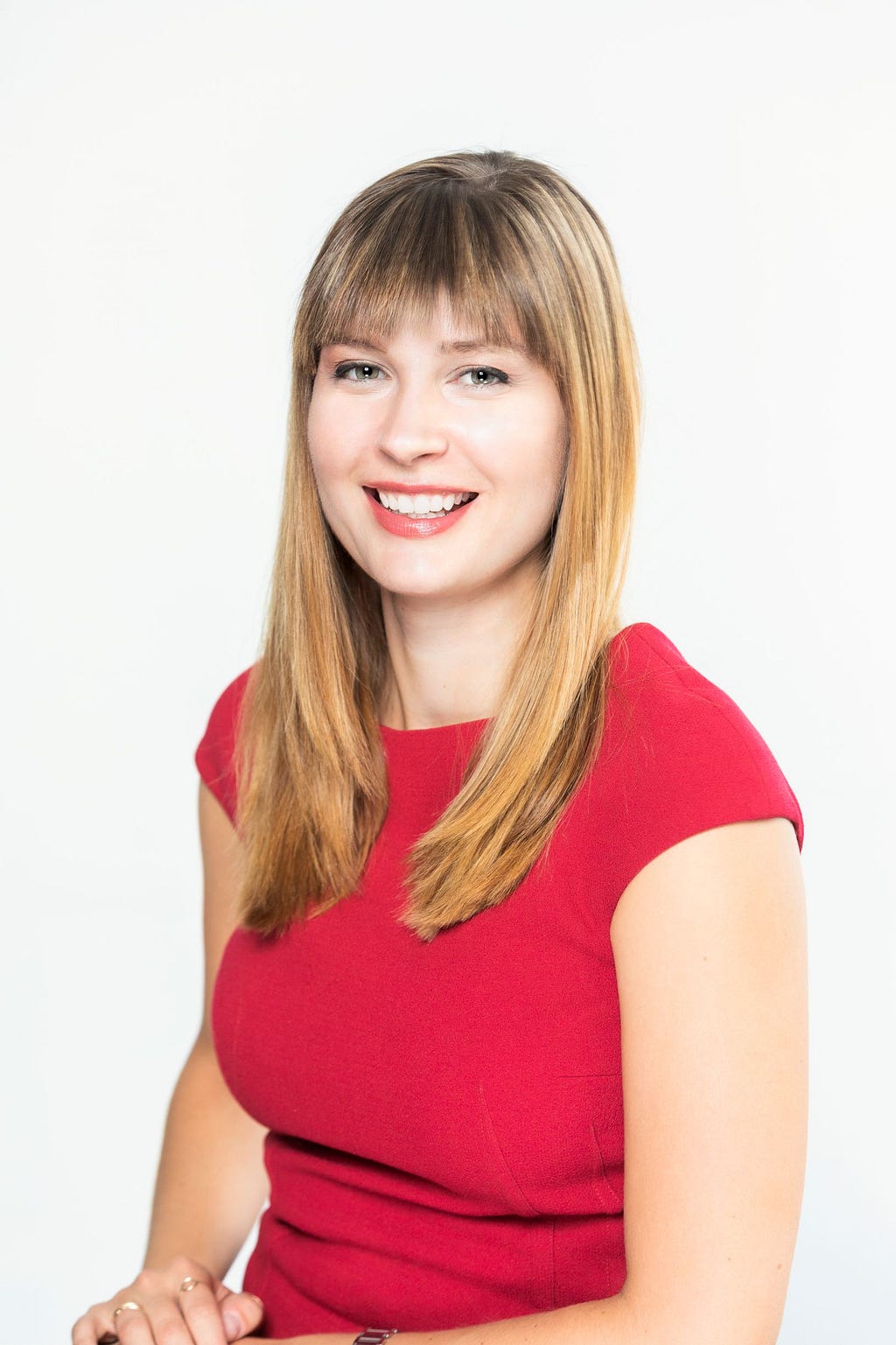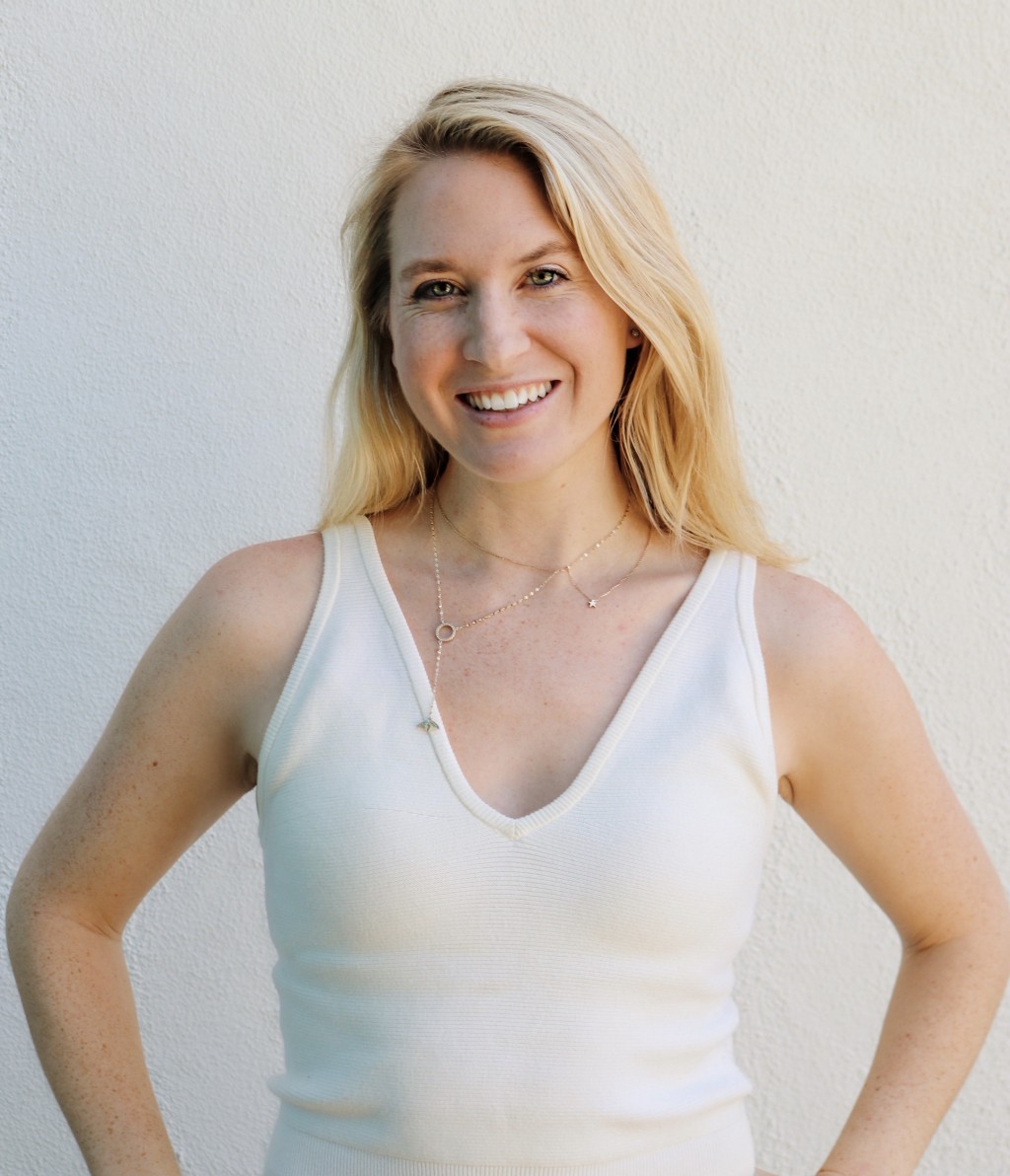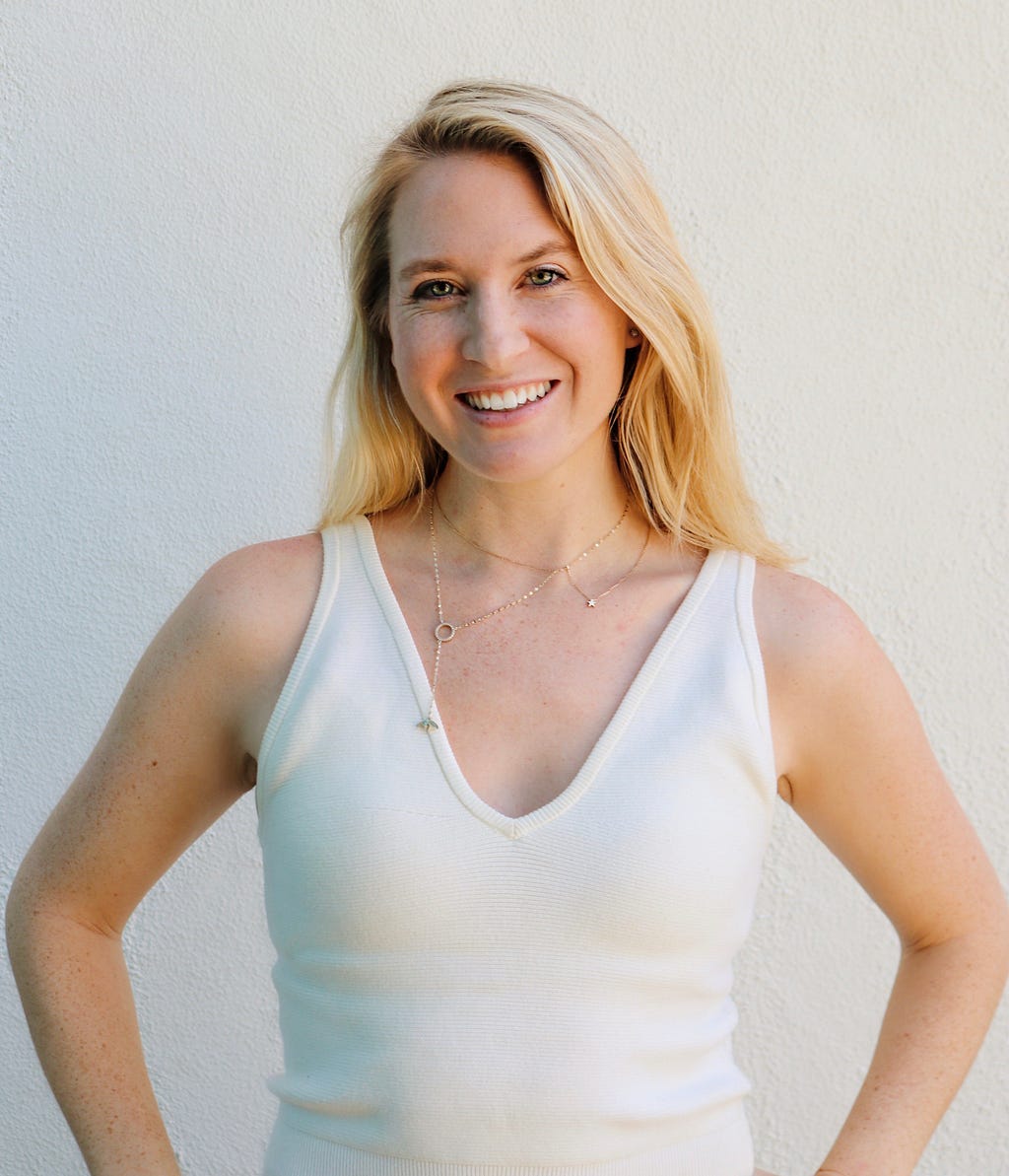An Interview With Candice Georgiadis

Find harmony in groupings of three and symmetry. Our minds are always trying to organize, and it feels good to see order in our spaces. I don’t particularly like symmetry in the traditional sense. So if you’re not a 2 books on the left of the object + 2 books on the right kind of person like me, think about the whole view in terms of symmetry. Do you have a floor lamp in one corner? Then a tall tree is needed somewhere on the other half of the space. And the rule of 3 is equally appealing as the 50/50 rule. For example, 3 throw pillows on a sofa — 2 on the left and one on the right — works just as well as 2 on each side. Either is better than random placement all around.
As part of my series on the “5 Things You Can Do To Help Your Living Space Spark More Joy”, I had the pleasure of interviewing Megan Hersch.
A Los Angeles native, Megan Hersch studied Communications at UCLA and spent six years in the film business (in New York and Los Angeles). Leaving an executive position at Universal Studios, Megan went back to school to study design at the UCLA Arc_ID program and subsequently went to work for two of LA’s top design firms — Kelly Wearstler and then Atelier AM — before founding her own firm, Studio MG Interiors, Inc. Seeing a change in the Design Industry and a need to give more people, more access to good design, Megan started the seedling 5 years ago that would become what roomLift is today: an online Interior Design solution that provides everyone with permission, advice, resources and support.
Thank you so much for joining us in this series! Before we dive in, our readers would love to learn a bit more about you. Can you tell us a story about what brought you to this specific career path?
I remember the day I was sitting in my own office as a Creative Exec at Universal Studios and I realized I was more excited to decorate that office and pick the pillows on my sofa than for the new job I had just been promoted into. I then realized a career shift was imminent. I was drawn to Interior Design by the creativity of the job and I stayed once I realized how much I could change someone’s mood, outlook and sometimes life by helping them design their home space.
Can you share the most interesting story that happened to you since you started this career?
Wow, this is a hard one! Before I started both my full service and e-design companies I worked for Kelly Wearstler. She taught me that anything can be fabricated and not to stop shopping when you get to the end of the catalog. She wrapped shagreen on dressers and wallpapered the ceiling (a trick I still use today!). And we designed her Home Office with floor to ceiling cerused wood cabinets and rolling Library ladders. This was a beautiful project and I cut my teeth on sourcing lessons and cabinetry construction for sure! Recently, over Covid I designed the Spa and residences at the Rancho Valencia Resort in Rancho Santa Fe, CA. It was a wonderful place to work through Covid as everything was outside and the lifestyle and general vibe at the resort was so relaxed and joyous. I loved going down there. I designed a tile “carpet” for their new Spa Salon out of Tabarka Tiles. I designed it on paper and when the tiles came in I was laying the pieces right with the stone guys. There was a lot of shifting and measuring and it turned out so beautifully! I count that as one of my most interesting and fulfilling experiences in the last couple of years. Looks like I’m turned on by color and pattern in otherwise serene and peaceful spaces!
Can you share a story about the funniest mistake you made when you were first starting? Can you tell us what lesson you learned from that?
I’m not sure if this is exactly funny because it was such a huge mistake but I definitely learned to triple check measurements of doorways, elevators and building access in a real way! I was working on a crazy, fast-paced 1-month surprise home theater for a client in Manhattan. We were waiting for the custom motorized sofa to be delivered and it didn’t fit in the elevator. I had checked the measurements but the depth x length x weight of the sofa made it impossible to get up to the apartment without renting a crane and taking it in through the window!!! It was a costly mistake and I definitely talk about checking measurements with all of my clients now way more than they’d like to hear about it. Let’s hope that never happens again!
What are some of the most interesting or exciting projects you are working on now? How do you think that might help people?
The next phase of roomLift began about a month ago when we opened our “platform” model up so that other Interior Designers can access more clients a la carte through roomLift has a hub. This allows customers to access Interior Designers they may not have otherwise been able to hire because they are only hiring a part of their service. Because roomLift off-loads 80% of non-design tasks, you don’t have to turn on the entire operating theater to get your teeth cleaned. This also allows Designers to access clients they may not have otherwise been able to because they only have to put in design time and not their whole team (read: less time and therefore less costly). “Design on your own terms” is the vehicle through which the Interior Design Industry will change and roomLift is at the forefront of this concept because we are designers using technology to create a better system.
Can you please give us your favorite “Life Lesson Quote”? Can you share how that was relevant to you in your life?
“Lead with Kindness” is probably the most governing “Life Lesson” to live by for me. I learned this early in my twenties when I was working for Scott Rudin in New York. It was a tough work environment and I found myself being syrupy sweet to anyone I came in contact with outside of work. Cashiers, cab drivers, baristas. I found that as I exuded kindness, it came back to me in multiples! It sounds simple but a mindset shift can really make a difference in your days! I teach my kids this now (and hope they will see how powerful it can be!)
None of us are able to achieve success without some help along the way. Is there a particular person who you are grateful towards who helped get you to where you are? Can you share a story about that?
It has to be my mom. As a single mom, and me an only child, we really were a team for my whole life. It was us against the world. I value her opinion and wisdom and she has been a sounding board for me as I raise my girls and through starting 2 businesses. She now lives in an ADU in my backyard — keep those who bring you joy close!
Thank you for that. Here is the main question of our discussion. What are your “5 Things You Can Do To Help Your Living Space Spark More Joy” and why. Please share a story or example for each.
- Surround yourself with things that you love! The number one rule in decorating (really, there aren’t too many rules) is to find pieces of furniture, art, fabrics that bring you joy and build your room around them. This may seem intuitive but when you’re shopping for furniture, especially if you have a partner in on the decision, it is easy to settle for a piece because of its functionality, price or availability. Take a moment before you make that purchase and ask yourself if this piece will bring you joy when you look at it every day at home. Reminding ourselves to think for a minute is a necessary strategy these days! And if the answer is “YES!” then you are well on your way to the next decision. Do you love a round black mirror? You may be working up a Modern Farmhouse vibe. A textured velvet throw pillow, perhaps Boho Chic is calling your name. One decision begets another and decisions can also spark joy!! (phew)
- Add plants in every room, if you can. Not only do plants absorb our carbon dioxide and put out more oxygen for us to breathe, elements of nature are soothing in a “return to your roots” kind of way. The organic shape of plants can also break up the straight lines of interior furnishings and give your mind a break in looking around your space. If you don’t have enough light or a green thumb to care for live plants, there are a great number of faux plants today that look SO real! Check out Magnolia Home and Pottery Barn for some of the best that I’ve seen. (Just don’t forget to dust them — that’s also a great chore for an 8 year old) 😉
- Find harmony in groupings of three and symmetry. Our minds are always trying to organize, and it feels good to see order in our spaces. I don’t particularly like symmetry in the traditional sense. So if you’re not a 2 books on the left of the object + 2 books on the right kind of person like me, think about the whole view in terms of symmetry. Do you have a floor lamp in one corner? Then a tall tree is needed somewhere on the other half of the space. And the rule of 3 is equally appealing as the 50/50 rule. For example, 3 throw pillows on a sofa — 2 on the left and one on the right — works just as well as 2 on each side. Either is better than random placement all around.
- Fill your walls! Art, mirrors, wall hangings. Remember these are the elements at eye level in your space so they can be reminders of things you love even when you are simply walking through a room. Many customers come to our platform with the basics of a room — sofa, rug, chair — and don’t love their spaces, despite all of the new furniture, or need help “finishing” it all so it looks like a designer helped. This is most often because there is nothing on the walls, or only small pieces. Art can be daunting (and expensive), so I get it. A gallery wall is an easy way to start — collect at least 5 pieces that mean something to you and together they can take up the space on the wall that a larger piece of art will. If you’re starting from scratch, I head to the Etsy search bar and type in my general parameters (“blue watercolor”) and set aside some good searching time. You’re bound to find something that sparks joy and then you can build around that. One of the reasons we call this help an accessory. Lift is these smaller elements really can Lift your space!
- De-clutter. Thank you Marie Kondo! “A place for everything and everything in its place” is a good rule to live by in your home. Clutter psychologically blocks creativity and can bring on more stress. Along the same lines, keep a clear path around all of your furniture. Too much furniture that you can’t move around feels restrictive. I recently moved my office out of my Bedroom and now that I can walk around my nightstand without practically side-shuffling, I notice that I feel lighter in my space! (Even I have to be reminded of these principles as we are all trying to cram too much into our right-sized lives!) If you consider your home your sanctuary, it should be a place where you can escape the stresses of the world. By bringing in more elements of joy and keeping out elements that block that joy, you are well on your way to the benefits of a well-designed home!
I realize so many of these tips have to do with what our brains and bodies psychologically need in order to find and be open to joy. In my 15 years of being a designer, the homes that work are consistently the ones that follow these principles.
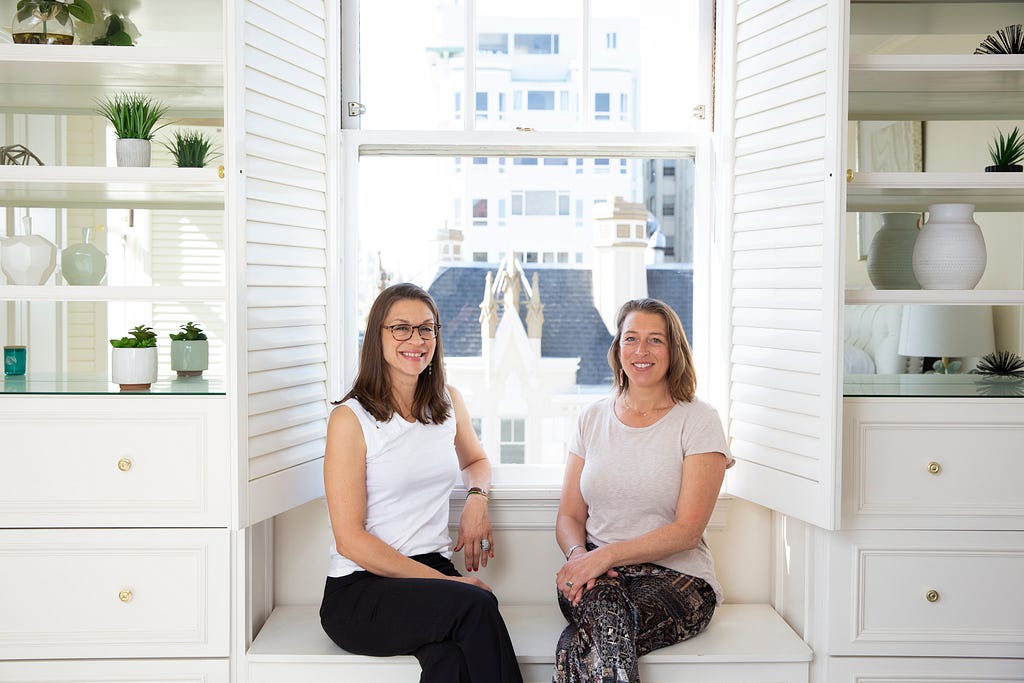
You are a person of great influence. If you could start a movement that would bring the most amount of good to the most amount of people, what would that be? You never know what your idea can trigger. 🙂
We are starting a movement of access with roomLift! We feel that the only way to change the inequality between rich and poor in this country is to create access for more people and so we’re doing just that! Somedays I feel like Jerry Maguire with his fish…join the movement!
We are very blessed that some of the biggest names in Business, VC funding, Sports, and Entertainment read this column. Is there a person in the world, or in the US whom you would love to have a private breakfast or lunch with, and why? He or she might see this, especially if we tag them 🙂
I’d love to sit down with LTK founder Amber Venz Box. What she has built with LTK is similar to what we’re building at roomLift. By placing value on creators/experts and creating a system of access while cutting out the noise, what Venz Box has built with LTK disrupts a traditional sales model in a similar way to how roomLift disrupts the traditional Interior Designer/Client agreement. What this means is that many more people can be experts and can access this expertise and so it levels the playing field in a way that has not been done before. It knocks at the door of the few who control it all and we’re who’s on the other side.
How can our readers follow you on social media?
Instagram @_roomLift_ , Pinterest @roomLift and TikTok @roomLift
Thank you so much for joining us. This was very inspirational!
Thank you so much!
Megan Hersch of roomLift: 5 Things You Can Do To Help Your Living Space Spark More Joy was originally published in Authority Magazine on Medium, where people are continuing the conversation by highlighting and responding to this story.



